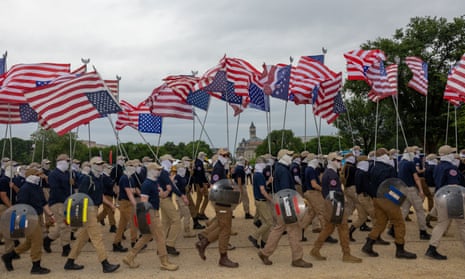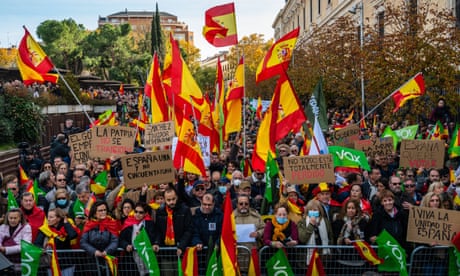De president en al zijn mannen wilden hem vernietigen
Daniel Ellsberg (1931-2023) Toen zijn onderzoek naar de oorlog in Vietnam in een la dreigde te belanden, speelde de Amerikaanse defensie-analist Daniel Ellsberg het door aan de pers. Plots lagen alle regeringsleugens op straat en president Nixons reactie liep desastreus af.
De „verachtelijke”, „laaghartige” Daniel Ellsberg, „de gevaarlijkste man van Amerika”, de „son of a bitch”, de „landverrader” is dood. Hij overleed op 92-jarige leeftijd aan alvleesklierkanker.
De vernietigende omschrijvingen dateren uit de jaren zeventig toen Ellsberg, ex-analist bij het ministerie van Defensie, een omvangrijk geheim rapport over de oorlog in Vietnam had doorgespeeld aan verschillende kranten. De citaten zijn onder meer van de zittende president Richard Nixon en diens minister van Buitenlandse Zaken, Henry Kissinger, die deze daad onvergeeflijk vonden – zowel van de ambtenaar Ellsberg als van de kranten die de onthutsende waarheid over de Amerikaanse oorlogsinspanning publiceerden. De regering probeerde de kranten juridisch en Ellsberg juridisch én met geheime operaties klein te krijgen, maar dat lukte niet.
Daniel Ellsberg (Chicago, 1931) was als econoom afgestudeerd aan Harvard, werd officier bij de mariniers en ging daarna werken bij de RAND Corporation, een denktank die nauwe banden onderhield met het Pentagon en met de defensie-industrie.
In 1964 haalde minister Robert McNamara, een van de architecten van de Vietnamoorlog, Ellsberg naar Defensie. Hij werd naar Zuid-Vietnam gestuurd, het land dat door de VS werd gesteund tegen communistisch Noord-Vietnam. Daar diende hij als officier („beste pelotonscommandant die ik heb gehad”, zei z’n commandant over Ellsberg). Maar zijn belangrijkste opdracht kwam van de minister: onderzoek hoe het met de oorlog gaat.
Ellsberg kwam gedesillusioneerd terug en schreef mee aan het rapport dat later bekend zou worden als de Pentagon Papers. Hij had in Vietnam al geprobeerd journalisten de ogen te openen. Nadat opperbevelhebber Westmoreland in het Congres had beweerd dat er „licht aan het eind van de tunnel” was, drukte Ellsberg de oorlogscorrespondent van The New York Times op het hart: „Jullie zijn bedot”, zo haalt journalist Rick Perlstein hem aan in zijn boek Nixonland (2008).
Eind 1968 werd Ellsberg duidelijk dat zijn suggesties – eenzijdige terugtrekking uit Vietnam – niet serieus werden overwogen door Kissinger, de man die op het punt stond de belangrijkste geopolitieke raadgever van president Nixon te worden. Het jaar daarop was Ellsberg aanwezig bij een anti-oorlogsdemonstratie, waar een dienstplichtig soldaat vertelde dat hij binnenkort naar de gevangenis zou moeten omdat hij niet wilde dienen in Vietnam. Het maakte zoveel indruk op Ellsberg („ik heb een uur gehuild op de wc”) dat hij besloot dat de inhoud van de Pentagon Papers, waarvan hij een van de vijftien kopieën bezat, publiekelijk bekend moest worden. Voorzichtige pogingen om politieke kopstukken ertoe te bewegen het bijna 7.000 pagina’s tellende document (3.000 pagina’s analyse, 4.000 documenten) naar buiten te brengen, liepen op niets uit.
Op 13 juni 1971 stond het rapport op de voorpagina van The New York Times: ‘Vietnam archief: Pentagon studie houdt drie decennia van toenemende Amerikaanse betrokkenheid tegen het licht’.
In de dagen erna bleef de krant publiceren uit het rapport, waardoor alle regeringsleugens – ook die van de Democratische president Johnson – over Vietnam aan het licht kwamen.
Met pruik en bril
Wat daarna gebeurde, raakte in later jaren verknoopt met de reeks van onwettige activiteiten die Nixon als president liet uitvoeren en zijn val ten gevolge daarvan.
De razernij die de president voelde ten opzichte van Ellsberg had formele trekken – „hij had staatsgeheimen over ons buitenlands beleid in oorlogstijd naar buiten gebracht”, schreef Nixon in zijn memoires – maar er zat ook een persoonlijke kant aan, gevoed door Nixons afgunst ten aanzien van intellectuelen en door zijn permanente lichtgeraaktheid over kritiek. De president en al zijn mannen wilden Ellsberg vernietigen.
Het rauwste verslag van hun pogingen staat in het boek Will van G. Gordon Liddy, een van de ‘loodgieters’ van president Nixon – zo genoemd omdat ze lekken naar de media moesten stoppen. Liddy schrijft dat het ontmaskeren en onschadelijk maken van Ellsberg „de hoogste prioriteit had” omdat hij „het symbool was voor allen die naar de pers lekken”.
Door een telefoontap van de CIA wisten de ‘loodgieters’ dat Ellsberg intensief contact had met zijn psychiater in Californië. Zou Ellsberg ook met hem hebben gesproken over de Pentagon Papers? En over eventuele handlangers? Russen, misschien? Liddy ging met mede-loodgieter Howard Hunt naar Californië, liet zich een nieuwe identiteit, inclusief biblio-theekkaart, pruik en bril aanmeten. Zo gingen ze naar de praktijk van de psychiater en fotografeerden wat ze maar konden vinden. Bleek dat de foto’s te donker waren.
Een tweede poging werd op touw gezet, ditmaal met Cubaanse handlangers, die ook met lege handen terugkwamen: er was geen patiëntendossier van Ellsberg. Later bedachten ze nog een plan om lsd in de soep van Ellsberg te stoppen, zodat het Witte Huis kon zeggen dat hij een drugsverslaafde was. Alles mislukte of werd afgeblazen.
Vrijspraak
In de rechtszaal liep de zaak al even slecht af voor de regering-Nixon. Een meerderheid van het Hooggerechtshof kwam eind juni 1971 tot het oordeel dat de kranten het recht hadden gehad om over de Pentagon Papers te publiceren. Twee dagen voor die uitspraak meldde Ellsberg zichzelf bij de politie. „Ik vond dat ik als Amerikaanse burger, als een verantwoordelijk burger, niet langer kon meewerken aan het geheimhouden van deze informatie. Ik heb dit gedaan met gevaar voor mijn eigen veiligheid en ik ben bereid de gevolgen van mijn besluit te dragen.”
Ik vond dat ik als Amerikaanse burger, als een verantwoordelijk burger, niet langer kon meewerken aan het geheimhouden van deze informatie
Daniel Ellsberg toen hij zich aangaf bij de politie
Tegen de tijd dat Ellsberg voor de rechter kwam, in 1973, was de Watergate-affaire op zijn heetst. Dezelfde loodgieters en Cubanen die Ellsberg hadden nagejaagd, hadden met medeweten van Nixon en diens naaste adviseurs ingebroken bij het hoofdkwartier van de Democratische Partij en waren betrapt. Een van de naaste adviseurs van Nixon getuigde tegen de president en verklaarde onder meer over de inbraakpoging bij Ellsbergs psychiater. De rechtbank sprak Ellsberg vrij vanwege het machtsmisbruik van de overheid tegen hem.
WikiLeaks
Na zijn vrijspraak bleef Ellsberg een vredesactivist en een veelgevraagd spreker. Toen Julian Assange zijn eerste onthullingen via WikiLeaks deed, gaf hij een kopie van de geheime documenten over de Amerikaanse militaire operaties in Irak aan Ellsberg, zo onthulde deze later aan de BBC. Hij is Assange, die inmiddels in een Britse cel zit, altijd blijven verdedigen.
In 2021 gaf Ellsberg documenten vrij over een Amerikaans plan om China met een kernaanval te treffen. Het plan dateerde uit 1958 en Ellsberg zei dat hij het had gekopieerd in de tijd dat hij kopieën maakte van de Pentagon Papers. In ’58 was de Chinese agressie ten opzichte van Taiwan hoog opgelopen en de Amerikaanse defensietop overwoog verschillende opties, waaronder een first strike met kernbommen tegen China. Destijds had hij deze documenten niet openbaar gemaakt, maar nu was de tijd gekomen, zei Ellsberg tegen alweer The New York Times, omdat de spanningen rond Taiwan weer zo hoog opliepen. Zo bleef Ellsberg op 90-jarige leeftijd nog altijd klokkenluider.
https://www.nrc.nl/nieuws/2023/06/16/de-president-en-al-zijn-mannen-wilden-hem-vernietigen-a4167436

/s3/static.nrc.nl/images/gn4/stripped/data97803957-74f428.jpg)
/s3/static.nrc.nl/images/gn4/stripped/data53399919-b6984c.jpg)




